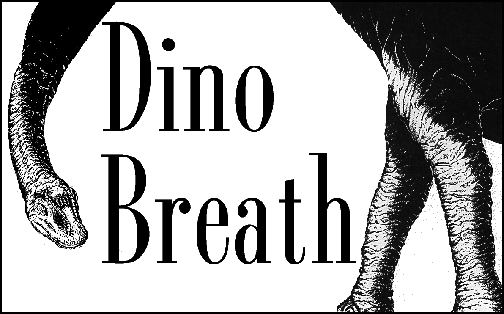

WHEN I WAS in fifth grade I did my first research paper. I called it ``Atoms and Molecules,'' and it was for Mrs. Nass's language arts class. I vaguely remember getting the idea from a book my parents had bought for my brother and me. What intrigued me then„and still overwhelms me now, 22 years later„is not only how small and numerous atoms are, but how permanent.
I must have been thinking about atoms a lot in fifth grade. One night, as I lay in bed waiting to fall asleep, my parents watching television in the living room, I realized something I was sure no one else had thought of before. The world needed to know.
``Mommmmm!'' I shrieked. ``I have to tell you something!''
My mother came quickly.
``Are you okay?'' she asked.
``Yeah,'' I said. ``I was just thinking that some atom in my body might have been in a dinosaur once. Or a tree or something.''
She was silent for a moment before she answered.
``Huh?'' she said. ``Let me get Dad.''
My father, a biologist, appeared at the foot of my bed.
``Yes, sweetheart,'' he said, ``it's quite possible one of your atoms once belonged to a dinosaur.'' Then he kissed me good night and returned to the living room.
At first triumphant, I soon became obsessed with my revelation. As I lay in bed I looked around my dim room. Everything in it was made of atoms that had been somewhere else. Everything was old, including me.
Now that I really am old, or older , and have spent a few years in labs, I accept that I was not the first person to figure out that matter„made up of my pals the atoms„gets reshaped and recycled. A friend told me the other day that Charles Schulz's cartoon character Pig Pen defends his filth by saying he could be carrying dust that Caesar had walked on. So much for originality.
Yet, I still find it fascinating to think that since the earth was formed everything that has ever existed here has been made from the same allotment of atoms. Only their arrangement has changed. A carbon atom exhaled by a prehistoric animal in the form of carbon dioxide could be in the wood of the chair I'm sitting on, or floating above the North Pole, or in a cell in one of my bones.
I picture atoms cycling through living things. A blade of grass takes in a molecule of carbon dioxide and combines the carbon dioxide with water to make sugar for fuel. The sugar, with its load of carbon atoms, gets stored in one of the grass's seeds. A mouse eats the seed, and the carbon atom becomes part of a protein molecule that ends up in a muscle in the mouse's leg. A hawk eats the mouse, and so on. The carbon atom is a traveler, assuming different identities, always contributing.
This cycling of atoms has gone on for billions of years. But now something different is happening. Some of our precious atoms, the only ones the Earth has ever had, are being locked away in man-made materials like plastic and Styrofoam that don't decay. These atoms won't be able to contribute to, say, a blade of grass for a very long time, if ever. Other atoms are simply being recycled before their time. Those once destined to rest for millions of years in veins of coal are being hacked out of mines and burned. The atoms in oil are pumped out of deep reservoirs and shipped to parts of the world where they wouldn't ordinarily be, if not for human intrusion.
I never thought about what we humans were doing to atoms when I was ten. And, truth to tell, I rarely dwell on it now. As dispirited as I become when I see a dump or an oil refinery, I'm tapping this essay out on a plastic keyboard, and not feeling all that guilty. I still get sucked into the beauty of the nature shows I watch on my TV, which is also made mostly of plastic. I guess I'm an eternal optimist„or maybe just happily out of touch.
Several years ago, my mother told me that my fifth-grade teacher had called after I turned in my research paper. Mrs. Nass thought I was strange. She was worried. She thought my parents should be worried. She didn't think a fifth grader should be thinking about atoms and molecules. And if Mrs. Nass were to read this essay, she'd probably still think I was strange. Because I'm sitting here still wondering which of my many atoms was once dinosaur breath.